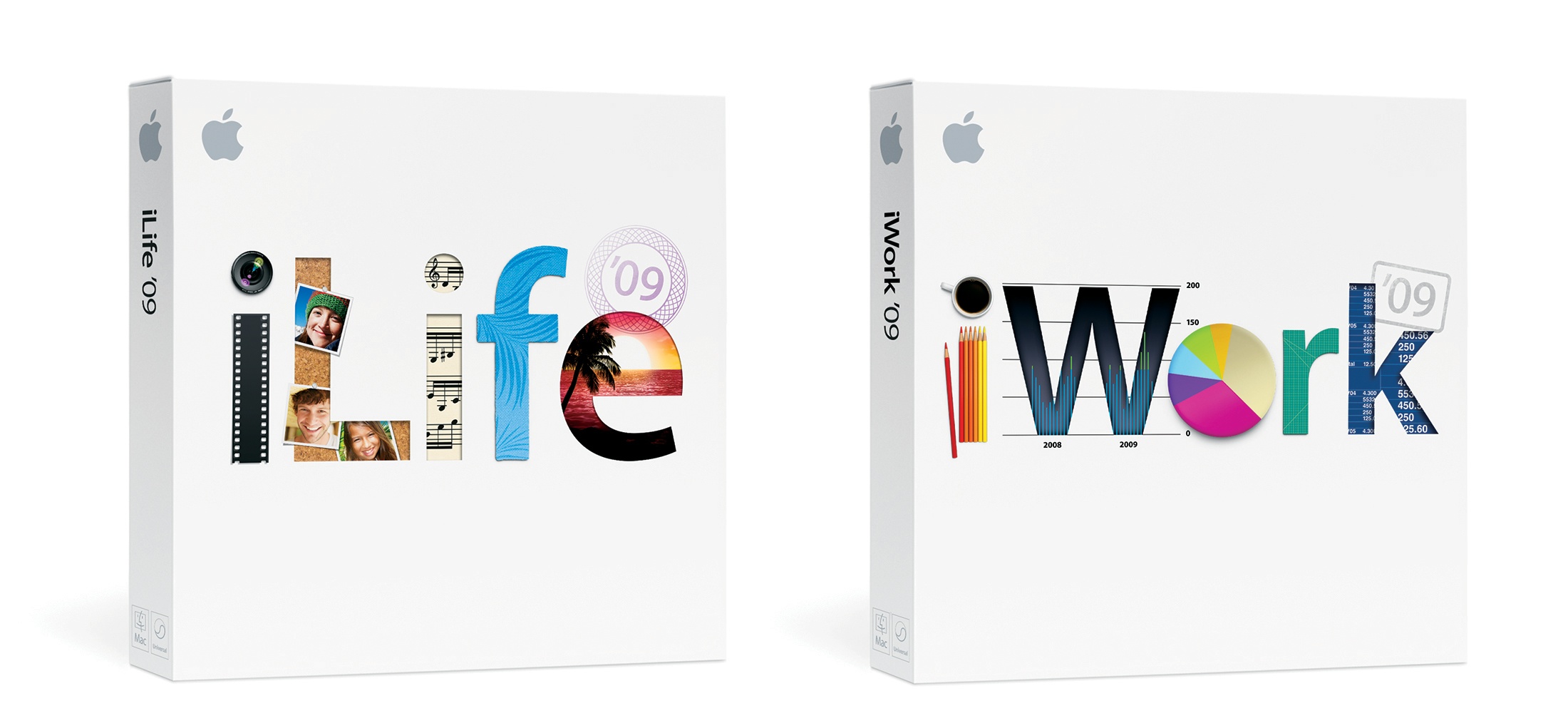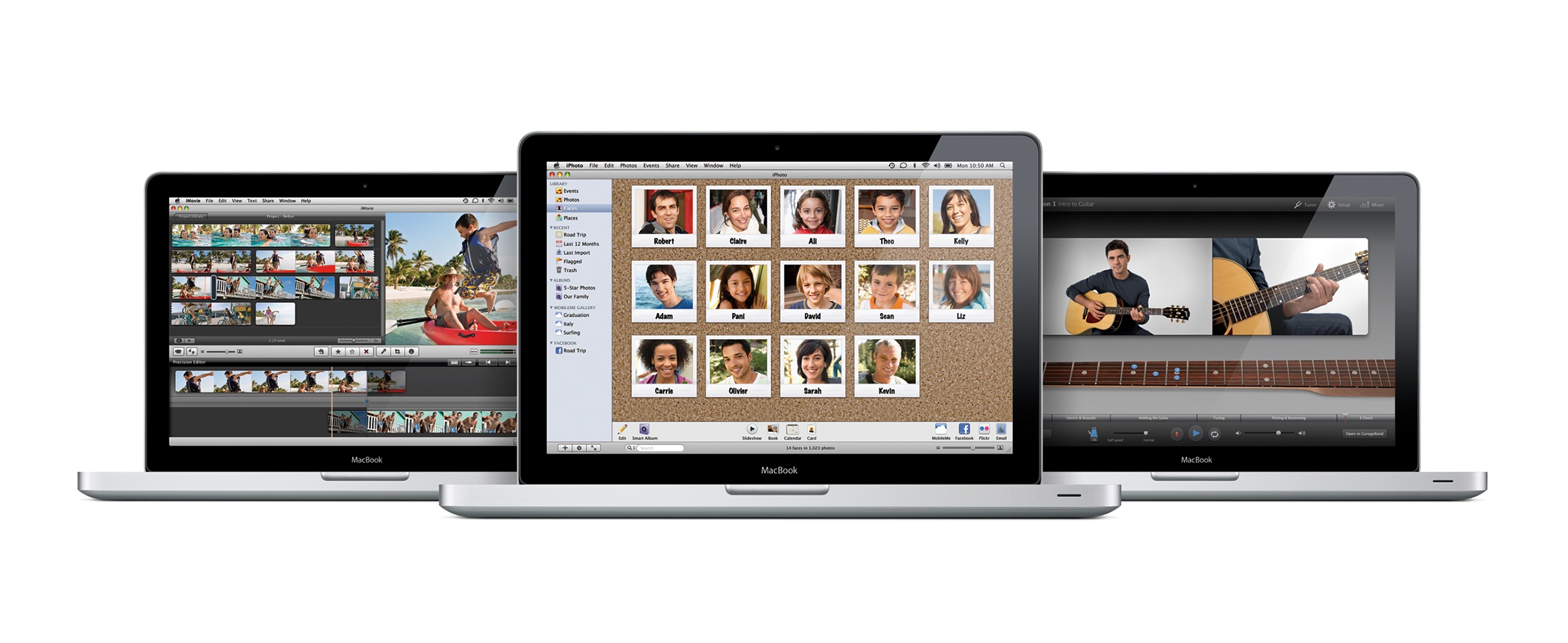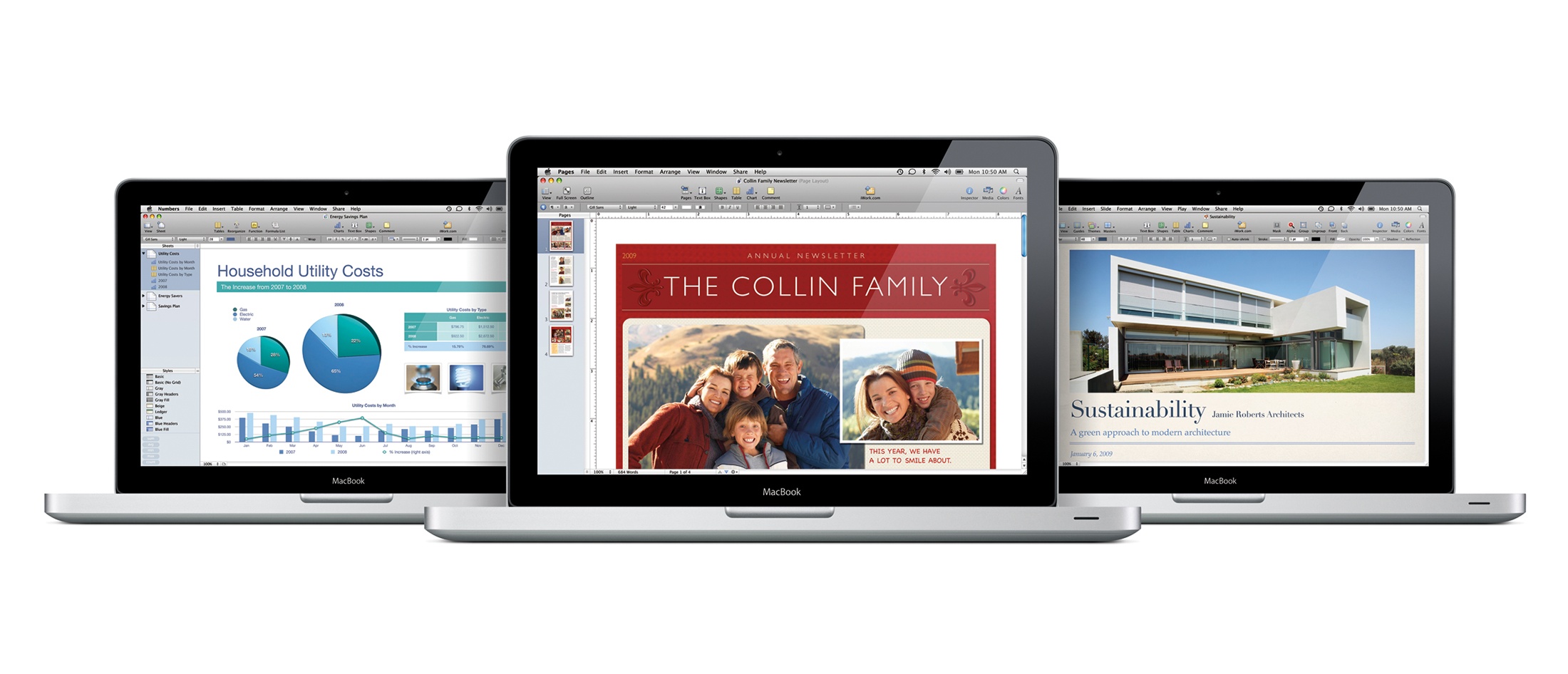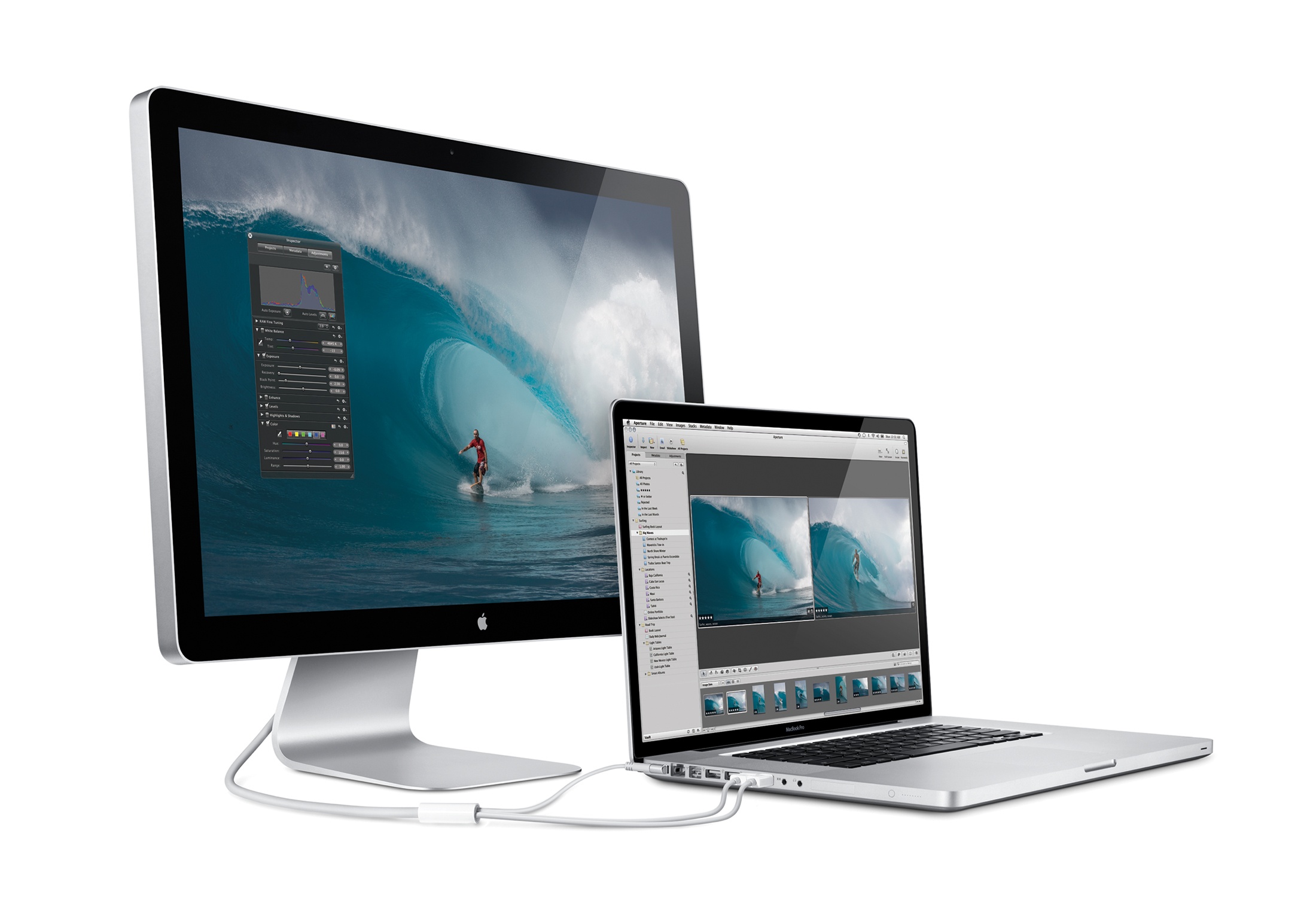In January 2009, Apple took to the stage at Macworld Expo one final time. The company announced the change a few weeks before the show. Phil Schiller would deliver the keynote. News of Steve Jobs’ medical leave would break just weeks later, one day before the keynote.
All of this cast a weird vibe over the event, and while it was far from Apple’s most exciting keynote, it’s worth revisiting Phil Schiller’s three announcements now, ten years later.1
iLife and iWork ‘09
After giving the cursory update on Apple retail and the business on a whole, the news of the keynote started with updates to both the iLife and iWork suites, which at the time were still sold on DVD for $79 each.
On the iLife front, iPhoto was updated with support for Faces and Places. The former used facial recognition to group images based on the people within them, and (just like today) users could manually add additional images or make adjustments. If you logged into your Facebook account with iPhoto, the application would sync face data with the website.2
This came in conjunction with Places, which grouped images via location data, either captured by the camera or entered manually.
These two features are still present today in Photos, and have become powerful tools for organizing our ever-growing libraries.
iMovie ‘08 had been a hard reboot for the application, and not everyone was happy with it. For 2009, Apple worked to add back features from the previous version.3 This included a more powerful timeline named the “Precision Editor,” which made it easier to make specific cuts and changes, with better support for dragging and dropping video into the timeline. Video stabilization was also available, as well as a wide range of new themes and transitions.
GarageBand ‘09 introduced “Learn to Play,” a feature based on instrument lessons. Users could learn the basics of guitar and the piano. “Artist Lessons” featured popular artists teaching how to play their hit songs. Ben Folds, Norah Jones, Sarah McLachlan, Sting, and more took part. These lessons were $4.99 each, while the basic lessons were free.
iDVD and iWeb remained products in the iLife lineup, but didn’t earn any stage time beyond a passing mention. They appeared at the bottom of the press release.
Apple’s productivity suite, iWork, was updated as well. Keynote now included “Magic Move,” a clever way to move between slides with shared assets with just a click. Other transitions and additional themes were added as Apple continued to make Keynote an extremely polished tool for presentations.
Keynote ‘09 included support for “Keynote Remote,” an iPhone app for controlling a presentation running on a Mac, over Wi-Fi.
Pages ‘09 added a full-screen mode that turned off all the window chrome, letting the document be viewed and edited on a black background that hid everything else on the screen. Menus and tools would slide in if the cursor was moved to the edges of the display, all two years before full-screen apps would make it to Mac OS X Lion.
On the productivity front, Pages could now be used as an outliner, and supported mail merge with tables created in Numbers. MathType and EndNote support was also added, as were a slew of new page layout templates.
Numbers ‘09 packed perhaps the biggest changes. This was the second version of the application, and Apple added a wide range of features, including better table re-ordering and an all-new formula editor, complete with over 200 functions.
iWork ‘09 also made these applications work better together. Numbers charts inserted into Pages or Keynote were now linked, and could be updated without having to bounce between the applications.
Schiller wrapped up the software segment with the “Mac Box Set.” It included iWork ‘09, iLife ‘09 and Mac OS X Leopard all for $169.
iLife was free on new Macs, and iWork cost $49 if purchased with a Mac. Stand-alone, each package was $79, and Leopard ran $129. The Mac Box Set was a great deal, especially considering Leopard cost $129 on its own.
Unibody 17-inch MacBook Pro
Schiller moved onto hardware, showing off the unibody 17-inch MacBook Pro. These big notebooks were in Apple’s lineup for some time, and this marked the last major revision to the family.
For 2009, the 17-inch MacBook Pro joined its smaller siblings in using the unibody design, making it thinner and more rigid than ever before, now clocking in at 6.6 pounds.
The new beast had a surprise: a sealed-in battery. While this had premiered on the MacBook Air, it was the first time a professional Mac notebook had an integrated battery. Users of these machines were used to being able to flip their portable over and swap in a freshly-charged battery, but Apple said that the new features the battery brought made the tradeoff worth it.
With the latch and door removed, the battery could be larger than before, lasting up to 8 hours. The real trick, however, was making a battery that could handle 1,000 recharges. This meant a battery would last three times longer than a normal battery, making the machine more environmentally-friendly.
At the time, some users were concerned this wasn’t going to work, but by starting with the 17-inch model, Apple could woo its most demanding customers. Before long, the 15- and 13-inch models followed, and now, we don’t think twice about the batteries being sealed into our notebooks.
iTunes Updates
The Macworld keynote ended with “one last thing,” which was a set of updates to iTunes.
First, Schiller announced an update to song pricing. Songs would now be available at $0.69, the classic $0.99 and a new $1.29. He assured the audience that more songs would be moving down in price than increasing.
Second, he recapped iTunes Plus, the DRM-free program the company ran within the iTunes Store. Users could “upgrade” their existing songs to ditch the DRM and get 256 kbps AAC encoded tracks. Schiller then announced that all 10 million tracks in the Store would be DRM-free by the end of Q1 2009.
Lastly, the iPhone’s version of the iTunes Store gained the ability to download music over 3G networks, whereas before it was limited to Wi-Fi only.
Ten Years Later
Apple leaving Macworld Expo was the beginning of the end. The show struggled for a couple of years after this, and 2014 would be the last year of the trade show.
In addition to everything I’ve already written about, Schiller also announced iWork.com, Apple’s first attempt at an online document suite. The beta web application allowed users to comment and make notes on a document, right in the browser. The sharing user could interact with these comments and notes within the desktop applications, but this was not the full collaboration we are used to today with something like Google Docs. iWork.com received an update in 2011, but was shuttered after iCloud launched.
There’s something else interesting about the Macworld 2009 keynote, however. While not unique to this event, I was struck that the company addressed software, hardware, and services in just 90 minutes.
In 2009, people thought of Apple being a hardware and software company, as “Services” wasn’t really a category unto itself yet. Today, it’s hard to draw the lines between Apple’s software and services, and part of that started at Apple’s last Macworld keynote.
- For bonus points, go read Jason Snell and Dan Moren’s liveblog over on Macworld’s site. ↩︎
- For example, if someone tagged a friend in a photo you published from iPhoto, their name would be added to the image in your local library. Hard to imagine Apple doing something like this ten years later, but 2009 was a different time. ↩︎
- A cycle that would repeat itself with Final Cut Pro X. ↩︎






